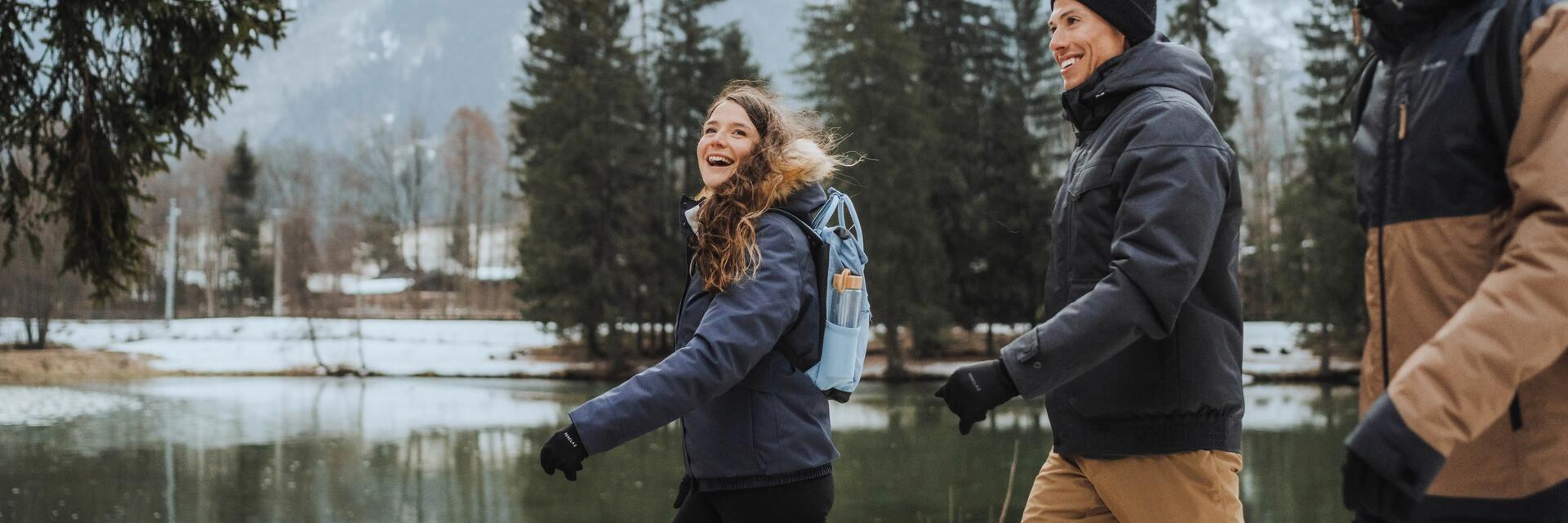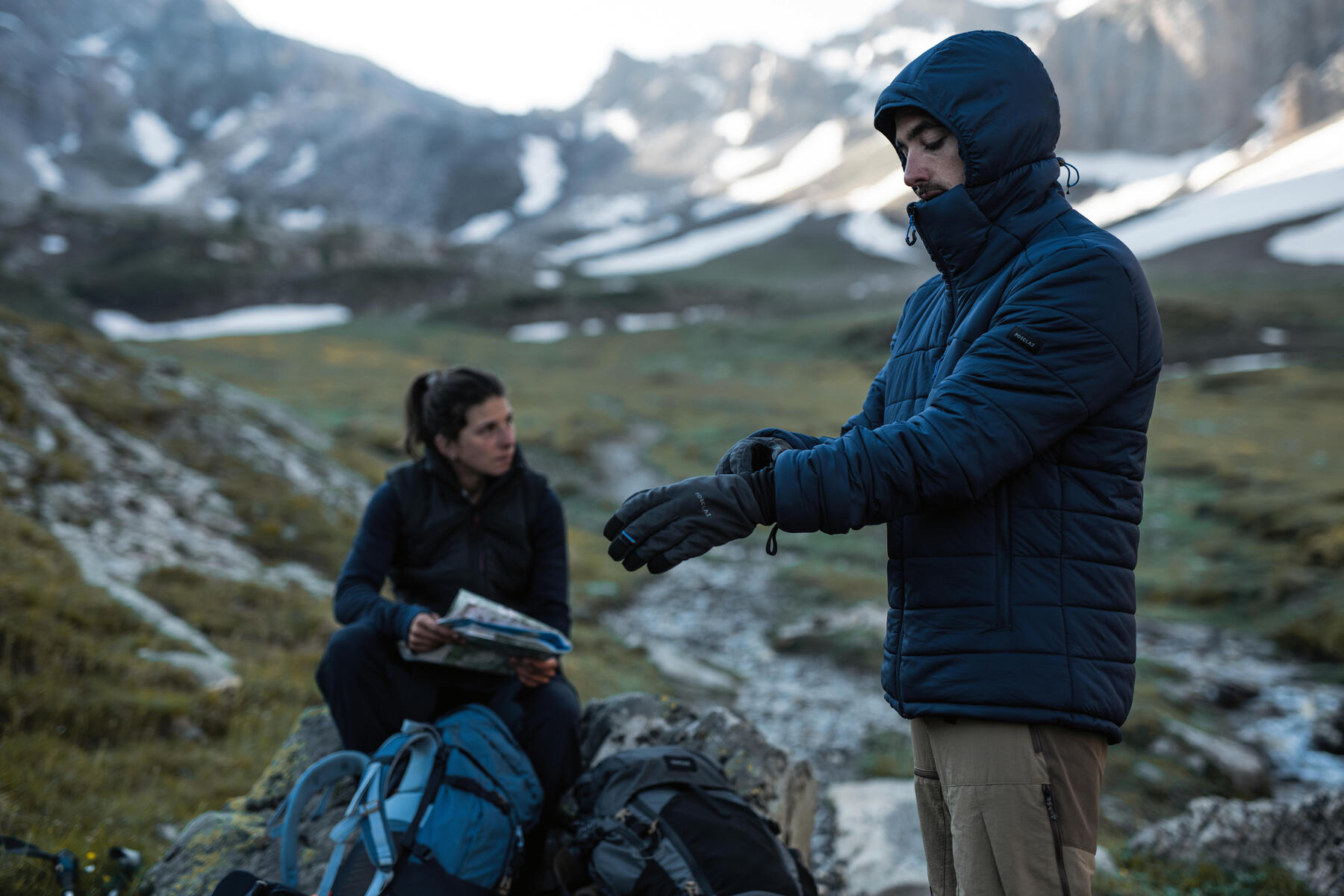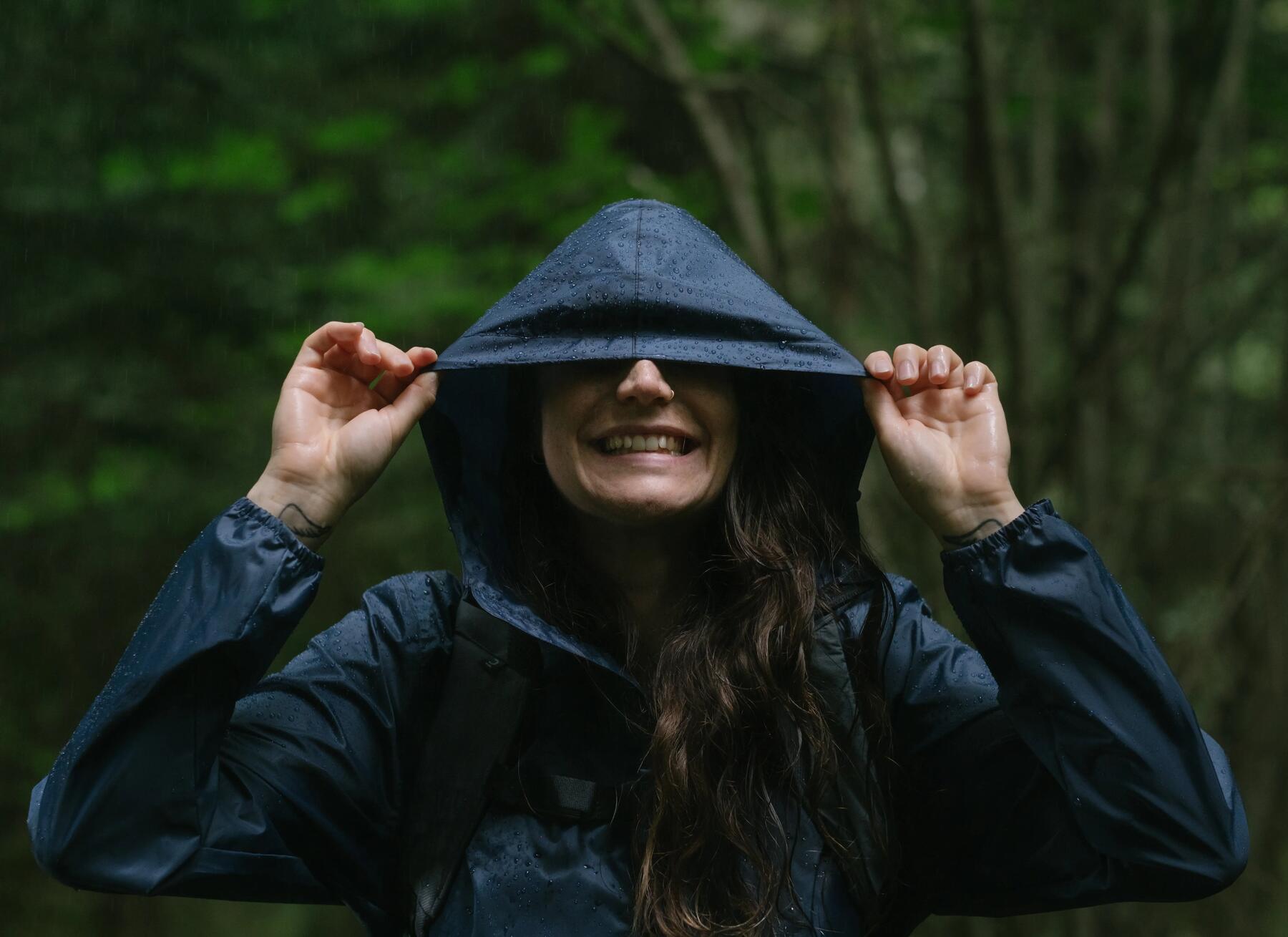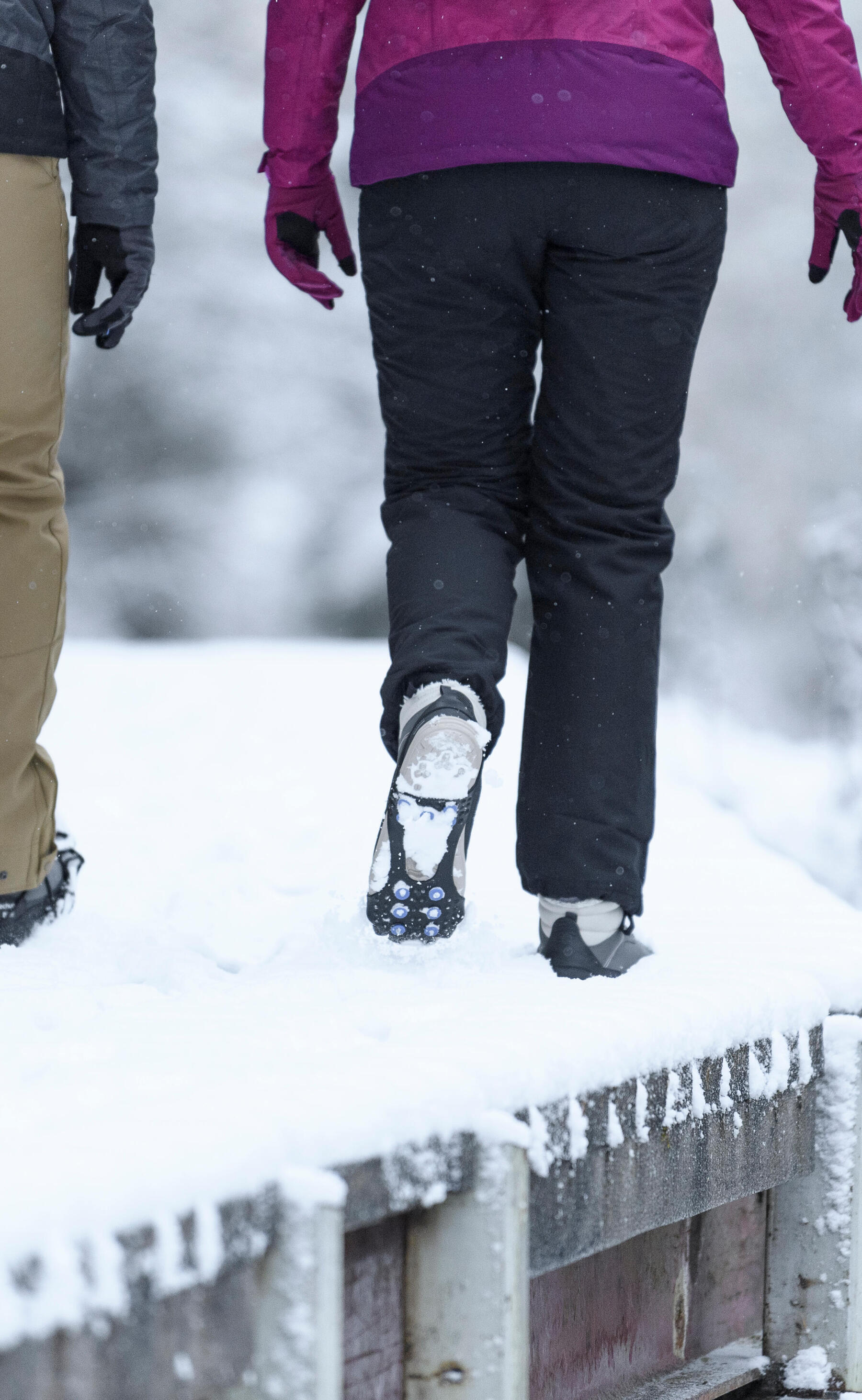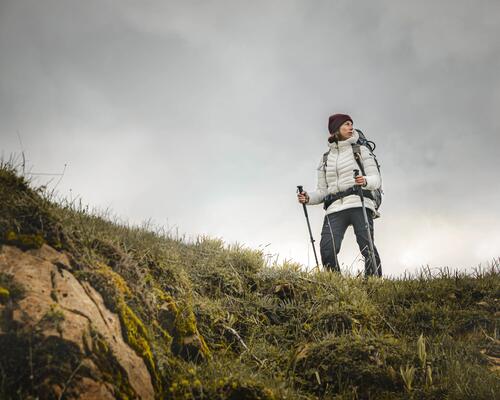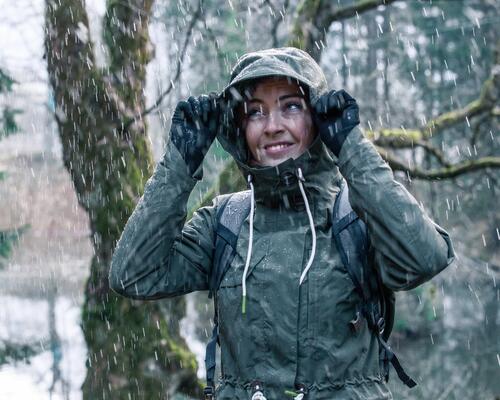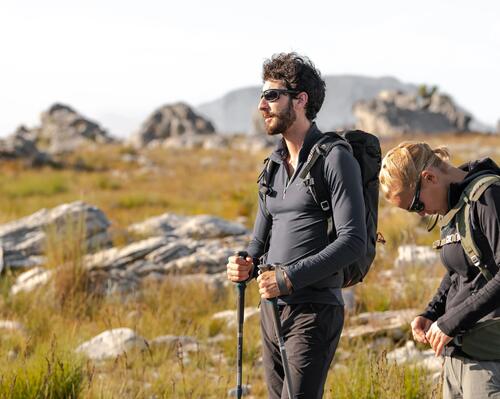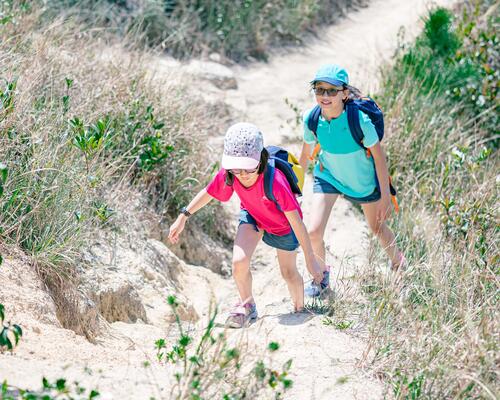4. How to wear the bottom?
We have learnt to use the onion layering system for upper body, and then what about the bottom? Here are some practical tips!
● Light and fast-drying hiking trousers - they are very flexible and comfortable. There are also a lot of pockets on the trousers for small things, and the main pockets also have zippers or buttons to prevent items from falling out of the pockets.
● Tights - many hikers like to wear tight pants and shorts. The tights can reduce muscles’ vibration during exercises, and provide adequate support for muscles and joints, as well as warmth and ventilation. During winter, you can wear the tights below a thin hiking trousers. When you feel too warm after warming up the body, you can take off the thin sport trousers.
● Thin water repellent soft shell trousers - thin water repellent soft shell trousers with moderate thickness and soft shell with windproof function. Walking on the ridgeline will not be too cold when you are exposed to the wind. In winter, you can wear tights with soft shell trousers during winter.
● Water repellent soft shell trousers with inner fleece - in winter, if you feel cold and don’t like layering, you can consider soft shell trousers with inner fleece. These trousers are designed for snow hiking, suitable for people who like to stay warm.
● Warm reminder: avoid wearing jeans when hiking! - jeans seem tough and fully compatible with outdoor activities. But denim is thicker, and the fabric is not elastic, which makes it easy to fall because the pants are tight when climbing or striding. In addition, the jeans are relatively airtight, and the material is very slow to dry. After sweating, the jeans will become hard and heavy, and will stick to the body. Once the sun goes down, jeans will instantly become cold and increase the risk of temperature loss! Therefore, avoid wearing jeans when hiking.
